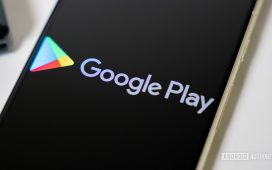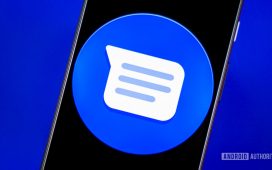This time around we’re comparing two smartphones from Samsung and Apple. We’ll be comparing the Samsung Galaxy S25 vs Apple iPhone 16. We’ve already compared the vanilla Galaxy S25 with the iPhone 16 Pro, due to their sizes mostly. The thing is, the vanilla iPhone 16 fits the Galaxy S25 perfectly in terms of both size and price, so… it makes all the sense in the world to compare the two phones.
As usual, we’ll kick things off by listing their specifications. Following that, we’ll compare the two phones across a number of other categories. We’ll check out their designs, displays, performance, battery life, cameras, and audio output. This should make for a rather interesting comparison, that’s for sure. Let’s get to it, shall we?
Specs
Samsung Galaxy S25 vs Apple iPhone 16, respectively
– Screen size:
6.2-inch Dynamic AMOLED 2X (flat, 120Hz, 2,600 nits max brightness)
6.1-inch Super Retina XDR OLED ( flat, 60Hz, HDR, 2,000 nits)
– Display resolution:
2340 x 1080
2556 x 1179
– SoC:
Qualcomm Snapdragon 8 Gen Elite for Galaxy
Apple A18 (3nm)
– RAM:
12GB (LPDDR5X)
8GB
– Storage:
128GB/256GB/512GB (UFS 4.0)
128GB/256GB/512GB (NVMe)
– Rear cameras:
50MP (wide, f/1.8 aperture, 1/1.56-inch sensor, OIS, Dual Pixel PDAF), 12MP (ultrawide, 120-degree FoV, f/2.2 aperture, 1/2.55-inch sensor, 1.4um pixel size), 10MP (telephoto, f/2.4 aperture, OIS, PDAF, 1/3.94-inch sensor, 3x optical zoom)
48MP (wide, f/1.6 aperture, 1/1.56-inch sensor, 1.0um pixel size, sensor-shift OIS), 12MP (ultrawide, f/2.2 aperture, 120-degree FoV, 0.7um pixel size, PDAF)
– Front cameras:
12MP (wide, f/2.2 aperture, Dual Pixel PDAF, 1/3.2-inch sensor size, 22mm lens)
12MP (f/1.9 aperture, PDAF, 1/3.6-inch sensor size)
– Battery:
4,000mAh
3,582mAh
– Charging:
25W wired, 15W wireless (Qi2 Ready), 4.5W reverse wireless (charger not included)
30W wired, 25W MagSafe wireless, 15W Qi2 wireless, 7.5W Qi wireless & 4.5W reverse wired charging
– Dimensions:
146.9 x 70.5 x 7.2 mm
147.6 x 71.6 x 7.8 mm
– Weight:
162 grams
170 grams
– Connectivity:
5G, LTE, NFC, Wi-Fi, USB Type-C, Bluetooth 5.4/5.3
– Security:
In-display fingerprint scanner (ultrasonic), facial scanning
Face ID (3D facial scanning)
– OS:
Android 15 with One UI 7
iOS 18
– Price:
$799.99+
$799+
– Buy:
Samsung Galaxy S25 (Samsung.com)
Apple iPhone 16 (Apple)
Samsung Galaxy S25 vs Apple iPhone 16: Design
These two devices do look quite different, both from the front and from the back. They both have rounded corners, but the curvature is more pronounced on the iPhone 16. You’ll notice a flat display on both phones, but different camera holes. The Galaxy S25 has a small camera hole up top, which is centered. The iPhone 16 has a much larger pill-shaped cutout for the camera and 3D facial scanning tech.
Both smartphones have rather thin bezels around the display, which are also uniform. The frame is flat on both phones, with a bit of curvature towards the edges for comfort’s sake. The Galaxy S25 has its power/lock and volume rocker buttons on the right-hand side. The iPhone 16 features a power/lock button on the right side, along with a Camera Control key. On the left, it features the volume up and down buttons, along with an Action Key.
If we flip them around, you’ll see different-looking camera layouts. The Galaxy S25 has three separate camera cutouts, which are vertically aligned. The iPhone 16 has a camera island with two cameras on the inside, and they’re also vertically-aligned. Both phones have flat backplates, by the way, and they’re both using glass. Their frames are made out of metal, aluminum, to be more precise.
The Apple iPhone 16 is a bit taller than the Galaxy S25, while it’s also a bit wider despite the fact it has a smaller display. That’s because its bezels are thicker in comparison. Apple’s handset is also a bit thicker, and heavier, there’s an 8-gram difference between the two. Both phones are slippery, and both come with an IP68 certification for water and dust resistance.
Samsung Galaxy S25 vs Apple iPhone 16: Display
The Samsung Galaxy S25 features a 6.2-inch Dynamic LTPO AMOLED 2X display. That panel is flat, and it offers an adaptive refresh rate from 1 to 120Hz. HDR10+ content is supported here, while the peak brightness is 2,600 nits. We’re looking at a screen-to-body ratio of around 91% here, and a display aspect ratio of 19.5:9. The display offers a resolution of 2340 x 1080, while the Gorilla Glass Victus 2 protects it.

The Apple iPhone 16, on the flip side, has a 6.1-inch Super Retina XDR OLED display. That panel doesn’t offer a high refresh rate, it’s stuck at 60Hz. HDR10 content is supported, as is Dolby Vision. The peak brightness here is 2,000 nits, while the screen-to-body ratio is at around 86%. The display aspect ratio is 19.5:9. This display offers a resolution of 2556 x 1179, and it’s protected by the Ceramic Shield glass.
Both of these displays are good, but the Galaxy S25 has an obvious advantage in comparison. It comes with a high refresh rate which definitely makes a different during usage if you’re used to high refresh rate displays. If you’ve only used 60Hz ones, you’ll be fine. Both panels are bright enough, while they’re also vivid and have good viewing angles. The touch response is good on both, while the iPhone 16’s panel is sharper, though that’s not something many people will notice due to the display size. Neither display offers high-frequency PWM dimming, though, which is a shame.
Samsung Galaxy S25 vs Apple iPhone 16: Performance
The Snapdragon 8 Elite for Galaxy SoC fuels the Samsung Galaxy S25. This is Qualcomm’s chip, and overclocked version of the Snapdragon 8 Elite, the company’s most powerful processor. It’s a 3nm chip. Samsung also included 12GB of LPDDR5X RAM on the inside, while the company is also using UFS 4.0 flash storage here.
The iPhone 16, on the other hand, is fueled by the Apple A18 processor. That is Apple’s 3nm processor, which is combined with 8GB of RAM inside of this smartphone. Apple decided to utilize NVMe flash storage here. Neither one of these two smartphones offers expandable storage, by the way, so what you buy is what you get.
You’ll be glad to know that both phones offer great performance. Day-to-day tasks are a breeze for the two devices. They open apps really fast, can jump between apps like it’s nothing, and also do a ton of demanding tasks without breaking a sweat. The same actually goes for gaming. Yes, both phones do get quite warm, but we did not notice either of them to overheat or something, even though they do get very warm during longer gaming sessions. Still, there was no issue in that regard, you can freely game on either device even though they’re not exactly made for that.
Samsung Galaxy S25 vs Apple iPhone 16: Battery
A 4,000mAh battery sits inside the Galaxy S25. It’s a regular L-Ion battery. The iPhone 16 also has a Li-Ion battery, but a slightly smaller pack, a 3,561mAh battery. Apple’s iPhones usually have smaller battery packs than their Android counterparts, so… this is not really odd. The Galaxy S25 actually ended up offering much better battery life than we expected considering its battery capacity. The iPhone 16 is also not lacking in that regard.
In fact, the iPhone 16 managed to outrun the Galaxy S25 from what we’ve seen, even though they both offer great battery life. Getting over 7 hours of screen-on-time is possible on either phone, with plenty of battery juice left. The iPhone 16 can actually go quite a bit above that. This is based on what we’ve seen, your mileage may vary. We just hope that the Galaxy S25’s numbers won’t drop in the coming months, as the updates to the Galaxy S24 managed to do a number of its battery life. As things stand, both of these phones can last a day for the vast majority of people, with ease.
The Galaxy S25 supports 25W wired, 15W wireless (Qi2 Ready), and 4.5W reverse wireless charging. The iPhone 16, on the other hand, supports 30W wired, 25W MagSafe wireless, 15W Qi2 wireless, 7.5W Qi wireless, and 4.5W reverse wired charging. Neither one of these two smartphones comes with a charger in the box, though.
Samsung Galaxy S25 vs Apple iPhone 16: Cameras
You’ll find three cameras on the back of the Galaxy S25, while the iPhone 16 has two back there The Galaxy S25 features a 50-megapixel main camera (1/1.56-inch sensor size), a 12-megapixel ultrawide unit (1/2.55-inch sensor size, 120-degree FoV), and a 10-megapixel telephoto camera (1/3.94-inch sensor size, 3x optical zoom). The Apple iPhone 16, on the flip side, has a 48-megapixel main camera (1/1.56-inch sensor size), and a 12-megapixel ultrawide camera (120-degree FoV).

Both smartphones do take good pictures, but they’re nowhere near the best camera smartphones in the market. With that being said, both phones prefer to take pictures with warmer tones. We did prefer photos from the iPhone 16 most of the time, as they’re closer to real life and less prone to oversaturating and oversharpening. The images also tend to come out more balanced. The Galaxy S25 does have its great moments, though, it’s not an exact science.
In low light, both phones do a rather good job. The Galaxy S25 tends to brighten up the scenes a bit more, but overall, both of them take good pictures. Their ultrawide cameras are a level below the main snappers, while the Galaxy S25 takes the telephoto section. The iPhone 16 doesn’t even have a telephoto camera, though 2x and 3x images do tend to look quite good after some digital processing.
Audio
You’ll find a set of stereo speakers on both of these smartphones. The ones on the iPhone 16 are a bit louder in comparison, but the difference is not that big. They both do the job, and offer good audio quality too.
There is no audio jack on either one of these two phones. You’ll need to use their Type-C ports in order to connect your wired headphones. If you prefer wireless audio, the Galaxy S25 offers Bluetooth 5.4, while the iPhone 16 supports Bluetooth 5.3.








